
After a rough start, the powerful 10mm Auto has found its way into the hearts of many shooters.
- The 10mm Auto is designed to run hot—with a max. pressure of over 44,000 psi, more than the .44 mag.
- Designed for semi-auto handguns, the 10mm is roughly equivalent to the .41 magnum, ballistically speaking.
- A favorite of handgun hunters, the big round is gaining favor with the self-defense market.
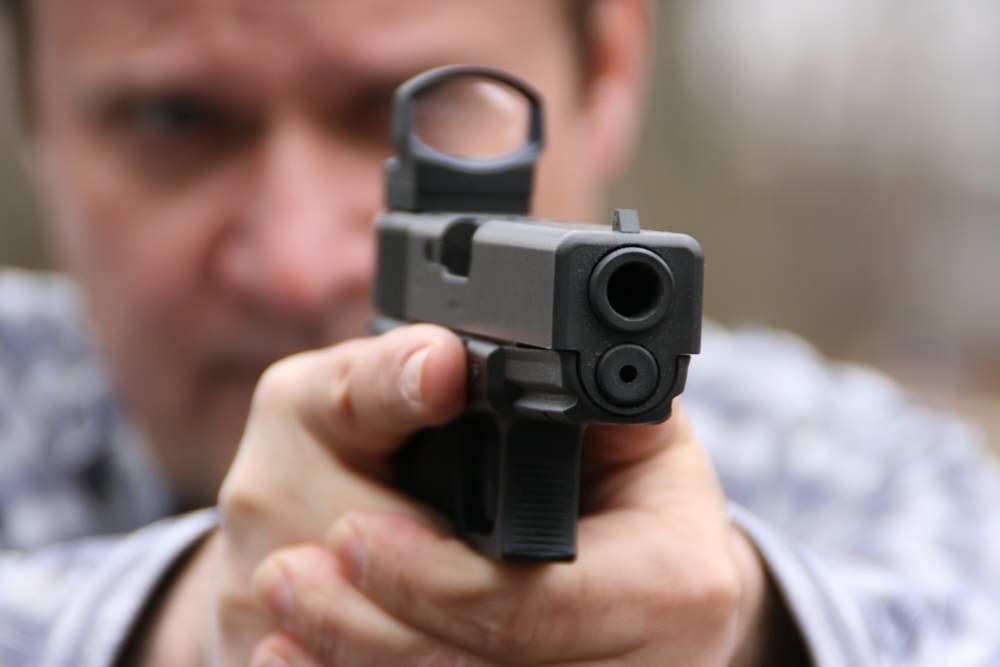
The 10mm Auto, or just plain 10mm, is an example of a cartridge that was a good idea but had a rough start. Designed to best the external ballistics of the .45 ACP, the 10mm easily surpasses the venerable round and the .357 Mag. and closes in on the power of the .41 Mag., and does so in a service-sized semi-automatic pistol.
Initial 10mm pistols were plagued with production delays and malfunctions. The round loaded as originally intended produced 44,440 psi, which is enough to shake the blueing off any pistol. The round battered pistols, which yielded poor accuracy, shadowing the 10mm early on.
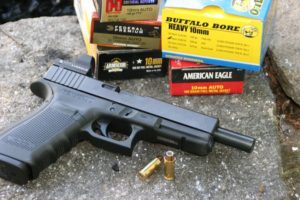
If not for a disastrous FBI gunfight, the 10mm might have faded from memory. That shootout and the fans of the cartridge did not allow the round to die. In fact, Glock and SIG have recently debuted new pistols chambered in 10mm Auto, and ammunition manufacturers such as SIG Sauer, Buffalo Bore and Double Tap are loading the cartridge as it should be — to its full potential.
The 10mm Auto is going through a renaissance of sorts. There is no doubt the 10mm Auto is a powerful round with substantial recoil, and it’s well suited for hunting and combat scenarios.
Jeff Cooper is considered the father and the creator of the modern technique of handgun shooting. His tool of choice was the 1911 platform chambered in .45 ACP. If Cooper’s chosen tool had a weakness, it was the .45 ACP’s external ballistics.
Get An Edge On The 10MM:
- A Perfect 10: The Best 10mm Handgun
- Best 10mm Ammo For Self-Defense And Hunting (2018)
- 10mm Vs .45 ACP: Making the Right Choice
- Glock 10mm: The Caliber's Stalwar Option
The heavy bullet pushed at a slow velocity rapidly sheds power across distance. Cooper envisioned a combat pistol round that had more power. From 1982 to 1983, Cooper and his cohorts — John Adams, Whit Collins and Irving Stone — designed a round and used a .30 Remington case cut down to .992 inch and loaded with a .40 caliber bullet like the ones used in the .38-40 WCF cartridge. The ammunition manufacturer, Norma, ironed out the cartridge design and was the first ammo maker to produce the 10mm Auto.
The initial load debuted in 1983 and used a 200-grain full-jacketed truncated-cone bullet. The bullet was similar to 9mm and .45 ACP bullets of that time. The muzzle velocity was 1,200 fps, with 635 foot-pounds muzzle energy. This load had a mean working pressure of 37,000 psi with a maximum pressure of 44,400 psi.
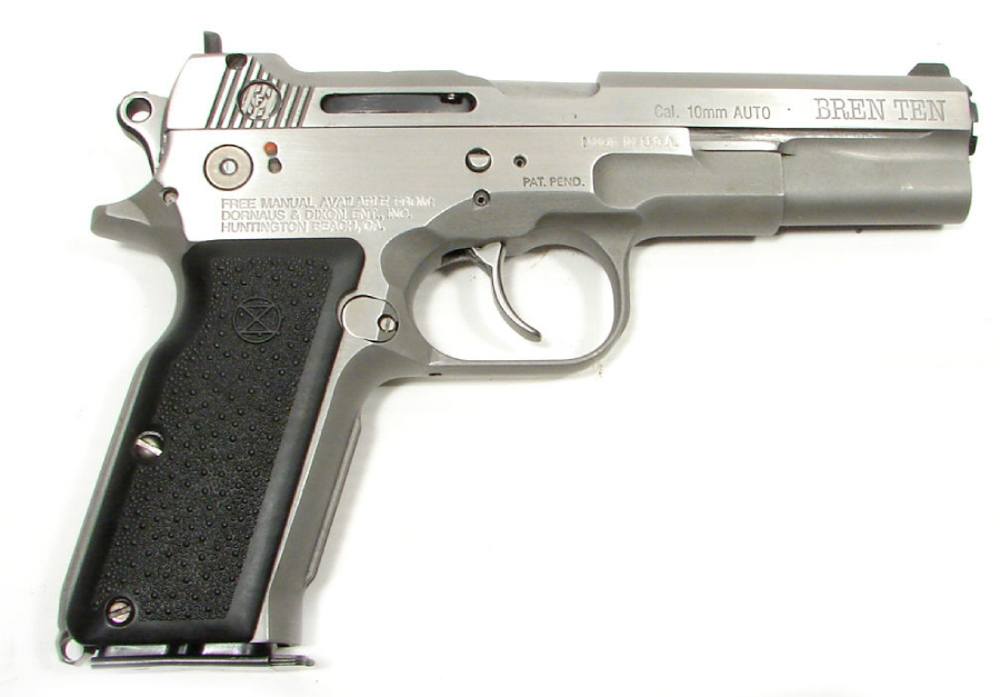
For comparison, the 9mm has a maximum pressure of 35,001 psi, and the .45 ACP has a maximum pressure of 21,000 psi. The .357 Mag. and .41 Mag. have a max of 35,000 psi. Even the .44 Mag. pressure at 36,000 psi is less than the 10mm. It’s safe to say the initial 10mm Auto was hot. But remember, the 10mm Auto was designed to be a hot, powerful cartridge. At that point, the missing piece to the 10mm Auto cartridge was a pistol.
In 1979, a separate group of similar-thinking firearm enthusiasts, Thomas Dornaus and Michael Dixon of Dornaus & Dixon Enterprises Inc., began developing a semi-automatic pistol to address the power gap between magnum revolvers and semi-automatic pistols.
They made contact with Cooper in about 1980 and found he and his group were working on a new cartridge design. They threw in together to develop the pistol and cartridge, and the result was the Bren Ten pistol. Although the Bren Ten was adapted from the CZ-75, it’s highly modified, meaning it was beefed up to hold up to the pressure the 10mm Auto unleashed.
The Bren Ten was a semi-automatic pistol that used a selective double-action trigger system. It had a 5-inch barrel, high-profile visible sights, an 11-round magazine and a stainless frame and slide. The pistols were produced from 1984 to 1986, and perhaps about 1,500 total were made. Issues arose with the magazine, and the recoil caused the pistols to not function properly.

It seemed the only time the pistol functioned properly was when Sonny Crockett, the lead character on the TV show Miami Vice, fired his trademark Bren Ten. The show helped elevated the gun into cult status, but in reality, the pistol was released too soon. More testing should have been done. Dornaus & Dixon Enterprises filed for bankruptcy, and it appeared the 10mm was dead. Obviously, popularity of the round and the defective pistols began to wane with law enforcement and civilian shooters. The aforementioned gunfight in Florida changed perceptions.
In 1986, the FBI was involved in a shootout in Miami-Dade County. The battle involved eight FBI agents and two suspected bank robbers. The event lasted less than five minutes, and although agents outnumbered the suspects, who were ex-military, and even though the suspects were hit numerous times, they returned fire and pinned down law enforcement.
The agents were armed with 12-gauge shotguns, 9mm semi-automatic pistols and .38 Special and .357 Mag. revolvers. One suspect was hit six times, and the other was shot 12 times. About 145 shots were exchanged. In the aftermath, two FBI agents were killed, along with the two suspected bank robbers. An ensuing investigation by the FBI placed partial blame on the death of its agents on the lack of stopping power of the agents’ service handguns.
Soon after the shootout, in 1987, the FBI tested 9mm and .45 ACP ammo and found both calibers lacking. The agency began studying wound ballistics and concluded that a bullet that penetrated vital organs creating a larger wound channel would be most effective — a conclusion that seems obvious today. By 1988, the FBI had developed a protocol for testing ammunition for penetration on soft targets through various barriers.
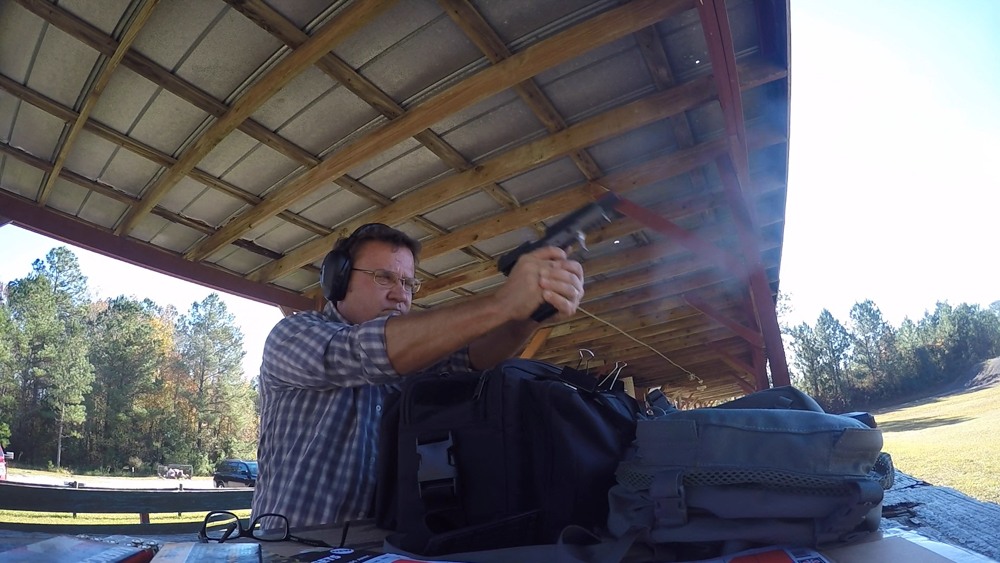
Tests are conducted at set distances with a block of 10 percent ordnance-grade ballistic gel, which simulates human flesh. According to the protocol, a cartridge has a minimum requirement to meet, which includes a minimum penetration into ballistic gelatin of 12 to 18 inches, expansion of the bullet to at least 1.5 times original diameter and 100 percent weight retention of expanded bullet.
Bullets are fired through various barriers, including steel, wallboard, plywood, heavy clothing and automotive glass at 10 feet and 20 yards. The 10mm Auto excelled in the tests and offered a compromise between a larger caliber and low magazine capacity, such as the .45 ACP, and the high magazine capacity of a less powerful round such as the 9mm.
The FBI approved adoption of the 10mm Auto cartridge in 1989 but needed a pistol. An RFP was issued, and pistol manufactures such as Colt and Smith & Wesson submitted guns for testing. Smith & Wesson was awarded the contract for about 9,500 Model 1076 semi-automatic pistols.
Colt offered a 1911 pistol in 10mm, but the RFP specs for the new 10mm pistol design were detailed, and some requirements excluded a 1911-style pistol, such as the requirement for a DA/SA trigger and 11+1 magazine capacity. Besides, early on, when the 1911 was chambered in 10mm, it performed like it was off its meds. The classic platform needed tweaking.
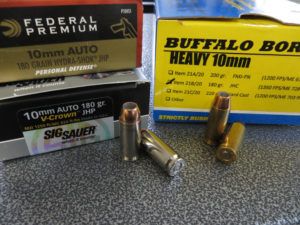
The Model 1076 was a full-sized stainless-steel pistol built to take the abuse the 10mm doled out, with a 4.25-inch barrel, no manual safety, a bobbed hammer, a nine-round single-stack magazine and a frame-mounted decocker like SIG-Sauer pistols. Extended magazines of 11 and 15 rounds were also part of the FBI’s new pistol requirements. The FBI went all in on the 10mm and also chambered some ancient Thompson Model 1928 submachine guns in the cartridge. It also contracted with Heckler & Koch for its MP5 submachine in 10mm, calling it the MP5/10. The issue then was recoil.
Many agents could not control the 10mm Auto, even in the heavy Model 1076 pistols. The term used was “unmanageable recoil.” The FBI then decided to continue testing, with a 180-grain Sierra JHP bullet to a muzzle velocity of 980 fps. This load reduced recoil enough for agents to tolerate it.
The FBI requested Federal ammunition to duplicate that reduced load, which became known as the “FBI-lite” round.
Other ammunition manufacturers followed the light loading, and some shooters found their 10mm pistols did not function properly with the reduced-power load. The light load also defeated the purpose of the 10mm, which was meant to offer better penetration and more power. It was a similar experience the .41 Mag. received when it was offered to law enforcement as an alternative to the .38 Special and .357 Mag — too much recoil.
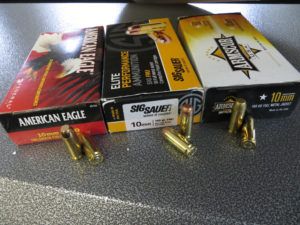
Because there was extra space in the 10mm Auto cartridge case because of the light load, Smith & Wesson cut the case from .992 inch to .850 inch to create the .40 S&W. The .40 S&W is essentially the 10mm Auto light load in a more compact cartridge.
The .40 S&W debuted in 1990 and was immediately popular with law-enforcement agencies because it could be chambered in 9mm-sized guns and had ballistics that nearly matched the 10mm Auto light load. Plus, recoil was much more controllable. It would seem the 10mm Auto was again in its death throes, but die-hard fans of the caliber remained.
Even before the .40 S&W hit the scene, other firearms manufacturers saw potential in the 10mm Auto. Again, the powerful round experienced fits and starts. In 1987, Colt debuted the Colt Delta Elite, a 1911-style platform chambered in 10mm Auto. The Delta Elite pistols were well made, but again, more testing with the round should have been conducted. The 10mm beat up the 1911 design.

The flaw in the Colt 10mm was the recoil system. A shock-buffer was needed to lessen the battering the pistol received from the round. Some receivers cracked as a result. Colt redesigned the recoil assembly to better withstand the recoil and added a slot cut into the receiver or frame to alleviate stress. Current Delta Elites function flawlessly.
Issues with the Bren Ten and early Colt Delta Elites did not endear the 10mm to accuracy. In fact, the round was thought of as inaccurate. Not so with current guns. Glock offered a full size striker-fire pistol the G20 in 1990 in 10mm Auto.
Subsequently, compact, sub-compact and long-barrel Glocks were offered in 10mm. In 2015, SIG redesigned the legendary P220 to handle the round. Probably the heir apparent to the Bren Ten is the full-sized Tanfoglio Witness, built in Italy and imported by EAA Corp. Like the Bren Ten, the Witness is based off the CZ-75 and is a heavy-duty version with features such as an SA/DA trigger, extended beavertail frame and exposed knurled hammer.
Kimber, Para, Dan Wesson and custom 1911-platform builders such as STI also chamber pistols in the caliber. In 1990, Smith & Wesson even chambered a revolver in the 10mm: the Model 610, a six-shot N-frame. It used moon clips to fire the rimless 10mm round and could also fire the .40 S&W cartridge.
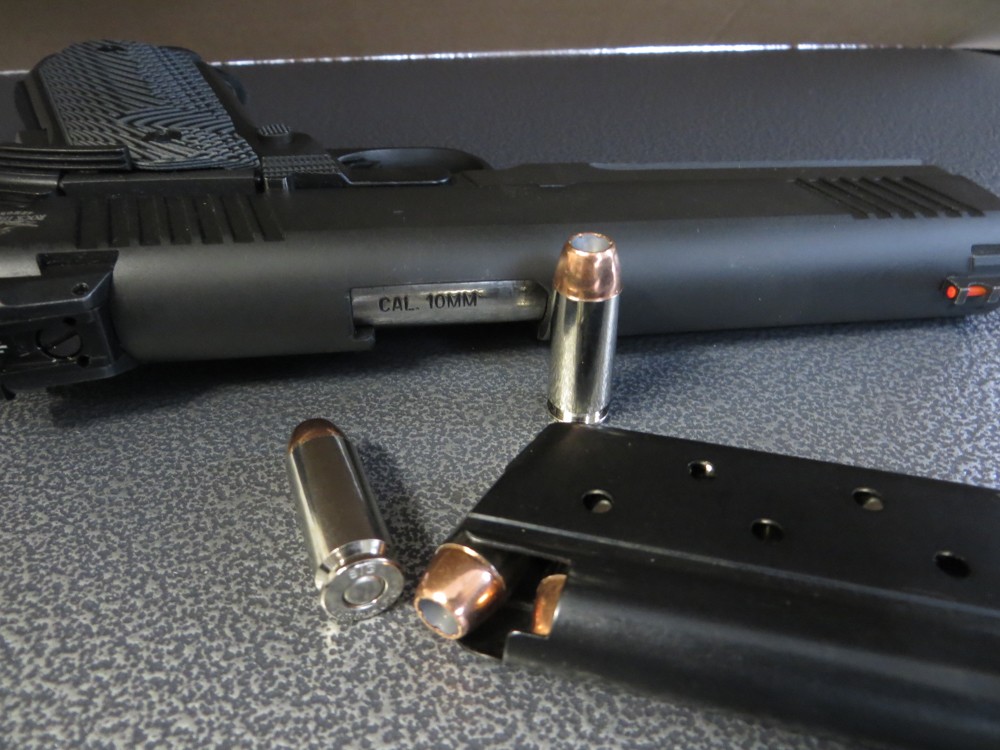
Handgun hunters have found a lot to like with the caliber, and that’s the section where my seat is in the 10mm fan club. I have liked the round since the Colt Delta Elites hit dealer shelves, and I tend to like it even more every time I fire the round out of various platforms, such as the Glock and SIG. For a serious hunting semi-automatic pistol, nothing really comes close to the 10mm Auto. There are three platforms I tend to lean toward: Glock, 1911 and SIG — and that’s in no specific order.
If you think 1911 pistols can’t hunt, you haven’t fired the 10mm through one. Buffalo Bore and Double Tap push 200-grain wide flat-nose hard-cast bullets at speeds of 1,300 fps with about 750 foot-pounds of muzzle energy — big medicine in such a handy-sized pistol.
The 10mm offers good penetration when you need to collapse a wild pig quick or fill the freezer with venison. All the major ammo manufacturers offer loads, but specialty manufacturers such as Buffalo Bore and Double Tap load the cartridge to its maximum potential.
These 200- and 220-grain hard-cast bullets are made to punch holes through flesh and bones with ease. I keep my shots at less than 50 yards when hunting pigs and deer, though I’m sure others have pushed the round much farther. I’m sure the rounds would do well from tree stand on a black bear with a sweet tooth.
I’ve achieved my best accuracy with the 1911 platform, which I attribute to the pistol and my comfort with shooting it. A few years ago, I had the pleasure of running an RIA TAC Ultra FS in 10mm. I’m still running it. This is an inexpensive 1911-style pistol that shoots like a tight-fitting custom pistol. The TAC Ultra FS uses a Series 70 system along with a one-piece guide rod and bull-barrel design that dispenses with the traditional barrel bushing. This setup aids accuracy.
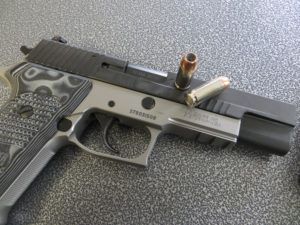
The flared bull barrel locks up tight at the muzzle. The barrel is stainless steel with a feed ramp, like a Clark Custom barrel. The integral ramp fully supports the case, so there’s no gap between the frame and barrel for bullet noses to snag on. The weight from an extra-long dust cover helps a bit with recoil, as do the serrations on the front strap and the checkered polymer main-spring housing. All aid in gripping and controlling this beast.
In the case of the Glock, the polymer frame makes recoil feel lighter. It flexes when the pistol is fired, so it absorbs some of the felt recoil. I’ve set up a Glock G20 FS Gen4 with a 6-inch hunting barrel and a Leupold DeltaPoint reflex sight especially for boar and deer.
The longer barrel helps squeeze out more velocity and, therefore, energy, and the red-dot increases my effective distance with the pistol. With 180-grain JHP loaded heavy by Buffalo Bore, I averaged 1,161 fps velocity with 539 foot-pounds of energy.
The G40 Gen4 MOS is set up like mine, except it doesn’t have an inch or so of barrel sticking out of the business end of the slide. The Glock 10mm pistols, in my opinion, are the softest shooting of the 10mm Autos I’ve fired. At first, I was prepared for the Delta Point reflex sight to fly off, but it has not — additional proof modern pistol designs have tamed the 10mm.
The iconic P220 has recently been re-chambered in 10mm, similar to how custom gun builder Gray Guns has been doing it for years. With Bruce Gray’s success at converting P220s to 10mm Auto, SIG approached him when it decided to go big bore with the P220.
“The 10mm creates an enormous volume of high pressure and a really fast acceleration rate of the bullet,” Gray said. “Lock-up systems take a beating like what was experienced initially with 1911 platforms chambered in the round.”
The frame of the SIG P220 pistol is very durable, and through some engineering, SIG used a combination of slide mass and recoil-spring system to tame the round. The P220 10mm pistol uses a multi-wire, stranded cable-style recoil spring to manage slide movement. Glock employs a flat spring configuration in its 10mm pistols.
The Colt Delta Elite 1911 uses a double-nested spring system to manage the recoil. Firing the 10mm out of a P220 Elite Match with its DA/SA trigger system, along with the grip shape and texture, allowed me to get back on target fast without the pistol shifting in my grip during recoil. It’s about time SIG chambered its P220 with a serious caliber.
Whether choosing the 10mm Auto for hunting, concealed carry or combat situations, remember to choose an appropriate load. As a concealed-carry pistol, it makes sense to load rounds that have less penetration. Remember, you are responsible for the bullets you fire. You do not want to defeat your assailant only to have the bullet pass though to accidentally kill a bystander.
Then again, if you like to go fly-fishing and share the stream with the locals, meaning bears, the 10mm Auto offers a lot of negotiating power in an easy-to-tote package.
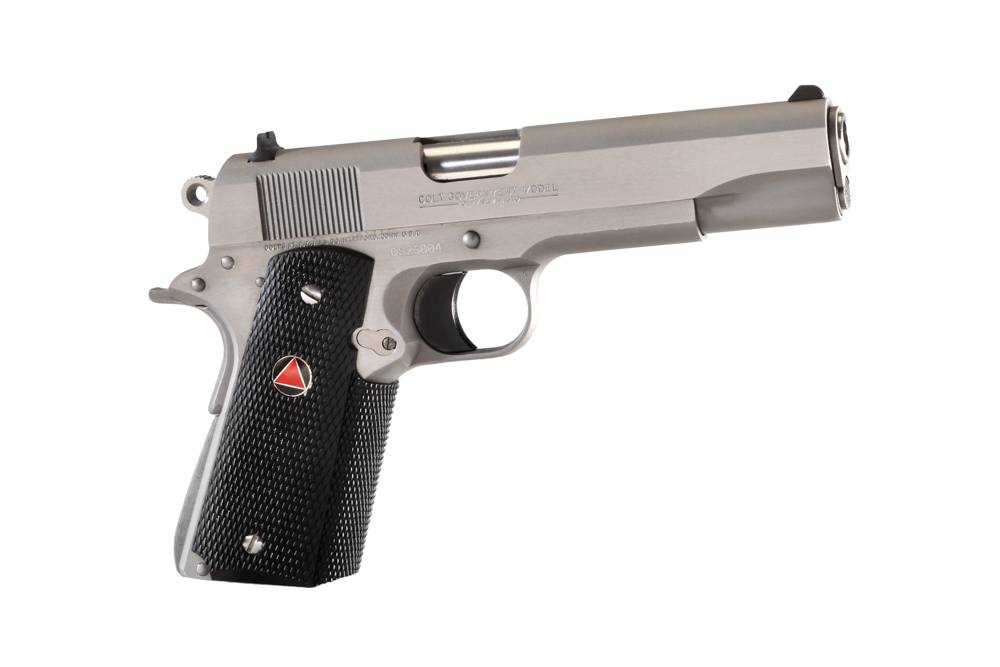
Because the .40 S&W caliber is so popular — thanks in part to the 10mm — there are numerous bullet weights and styles from which to choose. For a reloader, the sweet spot for bullet weight is a 180-grain or 200-grain bullet, though lighter bullets work, too.
These weights prove to be most accurate, along with a powder that has a fast to fast-medium burn rate, such as Alliant Blue Dot, Accurate Arms No. 7, Accurate Arms No. 9 and Winchester 231. Your .40 S&W dies will load 10mm Auto, so there really is no reason not to have a 10mm. The history of the .40 S&W and 10mm Auto can’t be pried apart. The two cartridges will forever be entwined.
The rough start for the 10mm proved to make it a better round. Die-hard 10mm fans have numerous pistol platforms to choose from, and the round is being loaded to suit the use: full potential or “lite.”
One of those fans is Ted Nugent, who uses the round to hunt and for concealed carry. He Tweeted a while ago, “10mm is the best damn pistol cal, period. If ya ain’t got 1 get 2 asap.” Listen to Uncle Ted, who is not too particular on the platform as long as it fires 10mm Auto.
Who knows, perhaps the Bren Ten and 10mm will be resurrected. In 2010 to 2011, Vitor Mfg. started to manufacture the Bren Ten, but it also ran into issues with the pistol. But why wait when there are plenty of SIG, Glock and 1911-platform pistols available for the 10mm Auto beast?
Load Up On These 10mm Ammo Tips
- Reliable Choices for Personal Protection: Best 10mm Self-Defense Ammo
- Breaking Down 10mm vs .45 Ammo – Performance and Practicality
Editor’s Note: This excerpt is from Cartridges of the World, 15th Edition.

Next Step: Get your FREE Printable Target Pack
Enhance your shooting precision with our 62 MOA Targets, perfect for rifles and handguns. Crafted in collaboration with Storm Tactical for accuracy and versatility.
Subscribe to the Gun Digest email newsletter and get your downloadable target pack sent straight to your inbox. Stay updated with the latest firearms info in the industry.

![Best Concealed Carry Guns In 2025 [Field Tested] Wilson Combat EDC X9S 1](https://gundigest.com/wp-content/uploads/Wilson-Combat-EDC-X9S-1-324x160.jpg)


![Best 9mm Carbine: Affordable PCCs [Tested] Ruger Carbine Shooting](https://gundigest.com/wp-content/uploads/Ruger-Carbine-Shooting-100x70.jpg)
![Best AR-15: Top Options Available Today [Field Tested] Harrington and Richardson PSA XM177E2 feature](https://gundigest.com/wp-content/uploads/Harrington-and-Richardson-PSA-XM177E2-feature-100x70.jpg)
